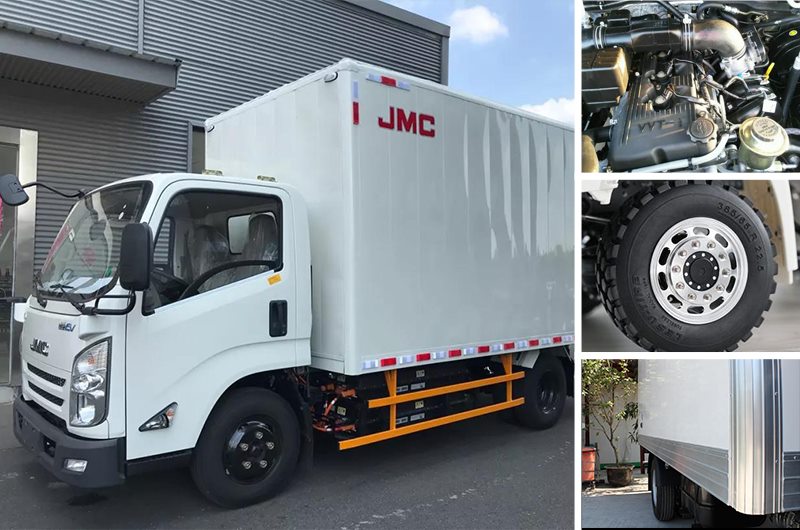As one of the most common light metals, aluminum is also the most widely distributed and most abundant metal element in the earth's crust, and aluminum and aluminum alloys have very strong properties, such as high strength, low weight, good formability, strong mechanics and mature technology. . In addition, aluminum materials can also be recycled and reused. As the number of automobiles and commercial vehicles in my country increases year by year and people's awareness of environmental protection increases, the recycling and regeneration of scrapped automobiles and commercial vehicles has attracted wide attention in the industry, and the performance advantages of aluminum products also determine their recycling value. Alumina is formed, which is a protective film, so the corrosion rate is very low. It is precisely because of the many advantages of aluminum and aluminum alloys that it determines its position in the field of automobile and commercial vehicle production.

1 Aluminum alloy forming process
In the production of modern automobiles and commercial vehicles, aluminum alloy materials are widely used, which is also in line with the lightweight development direction of modern automobiles and commercial vehicles. The application of aluminum alloys in the production of modern automobiles and commercial vehicles requires relatively mature forming processes, including:
1.1 Casting forming process As the main process technology of aluminum alloy forming production, most of the aluminum alloy material automobile and commercial vehicle production adopts this technology. The casting forming process can also be subdivided into precision, gravity, die casting, low pressure, extrusion and other casting processes. This technology is relatively mature and has the advantages of stable quality, high precision, and mass production.
1.2 Semi-solid forming process As a new type of aluminum alloy forming production process in the field of automobiles and commercial vehicles, this technology can directly produce products similar to ideal aluminum alloy products. Under normal circumstances, aluminum alloys have two forms: solid and liquid before forming. The semi-molten state helps the material change, and the semi-solid forming process can ensure that the aluminum alloy filling has a more stable filling of the cavity and can be formed better. The semi-solid forming process can effectively improve the precision of parts, improve mechanical properties, reduce solidification shrinkage, and prolong the service life of molds. At present, this technology has become a key technology in the field of automobiles and commercial vehicles, and there is a lot of room for development. However, the application of this technology is not yet able to achieve mass production of automobiles and commercial vehicles.
2 Classification and application of
aluminum in commercial vehicles
2.1 Application of cast aluminum alloy
(1) The engine generates a lot of heat energy during the operation of the engine, and the aluminum alloy has good thermal conductivity and corrosion resistance, so it can meet the performance of high temperature and high oxidation, and can be used to make cylinders and cylinder heads, especially for commercial vehicles and commercial use. For car engines, the application ratio of aluminum alloy materials is increasing. For example, Toyota's Lexus IMZ-FEV6 engine oil pan adopts cast aluminum alloy.
(2) The wheel hub is made of aluminum alloy, which has the advantages of good heat dissipation, high strength, light weight, high precision, beautiful appearance, and reduced vibration, and the utilization rate of aluminum alloy wheels in Germany, the United States, Japan and other powerful automobile and commercial vehicle countries has been reached more than 85%. Aluminum alloy wheels mainly adopt gravity casting and low pressure casting processes. The lightweight development of automobiles and commercial vehicles has become a major trend, and the stamping and spinning processes are gradually replacing gravity casting and low-pressure casting solutions.
2.2 Deformed aluminum alloy Compared with castings, deformed aluminum has stronger toughness and strength. In addition, the proportion of alloy in deformed aluminum is relatively low, so parts and profiles can be produced by pressure processing.
(1) Body panels At present, deformed aluminum is widely used in body panels, including 2,000 series, 5,000 series, and 6,000 series. After the heat treatment of aluminum alloy sheet, it can be used to make the shell and body frame of automobile and commercial vehicle. Among them, the 5000 series cannot be strengthened by heat treatment.
(2) Others Applying aluminum alloys to suspension parts of automobiles and commercial vehicles can effectively reduce the weight of parts and ensure the stability of automobiles and commercial vehicles. Aluminum heat exchangers are more than 40% lighter than copper heat exchangers. Almost all Japanese and American auto and commercial vehicle companies use aluminum auto and commercial vehicle air conditioners. In developed countries, aluminum radiators are also widely used. The application rate in the United States has reached more than 65%, and the application rate in Germany, the United Kingdom and other major automobile and commercial vehicle countries has reached more than 95%.
2.3 Aluminum matrix composite material As a new type of aluminum material, aluminum matrix composite material has many advantages such as high dimensional accuracy, high strength, low density, strong plasticity, and good wear resistance. In the 1980s, Toyota first used aluminum-based composite material for the engine return piston, which was 10% lighter than cast iron pistons and increased thermal conductivity by 4 times. The American duralcan company uses aluminum-based composite materials to manufacture brake discs for automobiles and commercial vehicles. Compared with traditional cast iron brake discs, the weight is reduced by 50%, and the heat dissipation and wear resistance are also very strong. In recent years, aluminum-based composite materials have also been used in brake system components and drive shafts of aluminum-based composite materials.





